As it is said, “Tea Ceremony is one of the comprehensive arts.”, it is full of many learnings.
Starting with learning how to make tea, you learn things one by one, as if opening door after door.
Tea Room
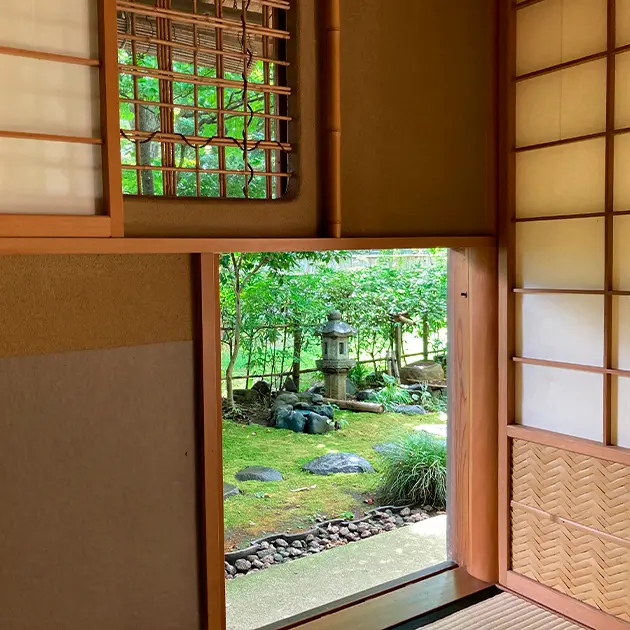
The room where the host makes and serves tea to the guests.
There is natural scenery as you enter the garden path; you calm down as you walk, then you’ll see the tea house which is very small (smaller than 4 and a half TATAMI MATS, 8.1㎡) , with an entrance called NIJIRI GUCHI.
Tea Serving
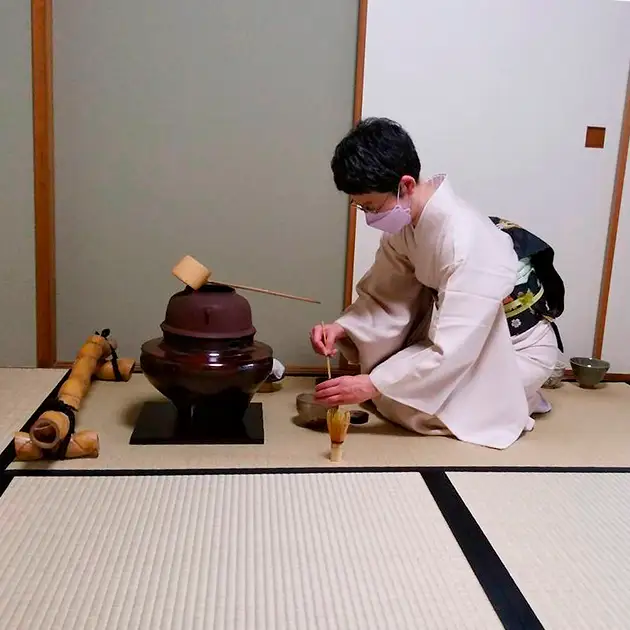
A series of the motions of tea serving is called TEMAE. KOBORI ENSHU RYU has more than 70 kinds of tea servings.
The way to enjoy the tea servings is up to you; with a calm and peaceful mind solemnly, with your tea friends friendly, and so on.
Formal Tea Gathering and Tea Ceremony
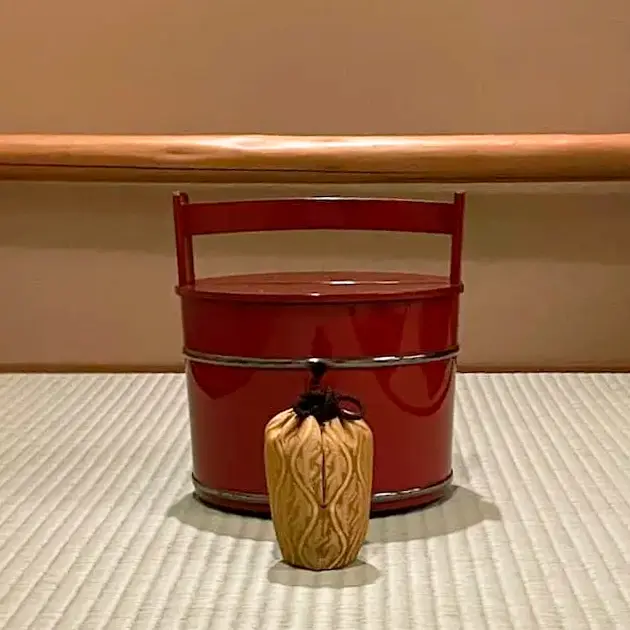
Formal Tea Gathering is a small private gathering of 1 to 5 people.
There are 7 different styles. One of these called “Noon Tea Gathering” is a 4 hour long service, which starts with SUMI TEMAE, setting up the charcoal, KAISEKI, the meal, KOICHA, thick tea, and USUCHA, thin tea.
The Tea Ceremony is also called a big gathering. More than 10 to a few hundred guests are invited. Thick tea, thin tea, and light meals are served in most of the cases.
KOICHA and USUCHA
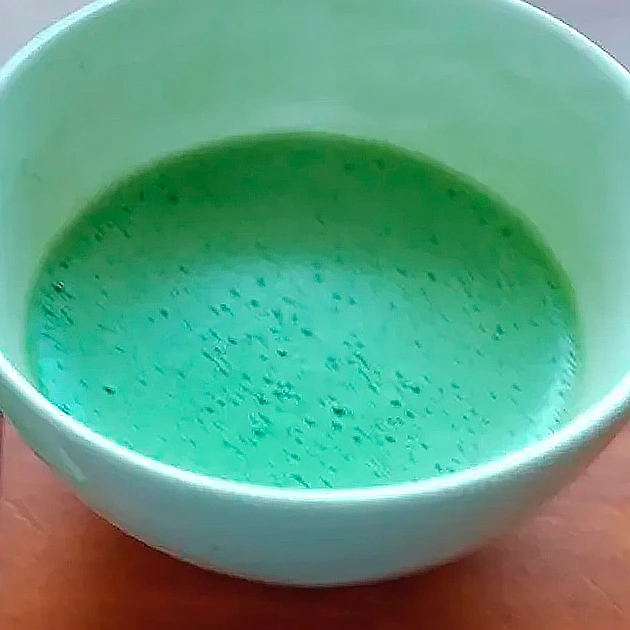
KOICHA is a very thick tea, that you “knead” to serve.
USUCHA is a light tea that is foamed using a mixing technique called TATERU, using a small amount of powdered tea and hot water.
The powdered tea tastes slightly different according to the season and the region of production. It is used in TOCHA, a tea tasting contest.
Sweets
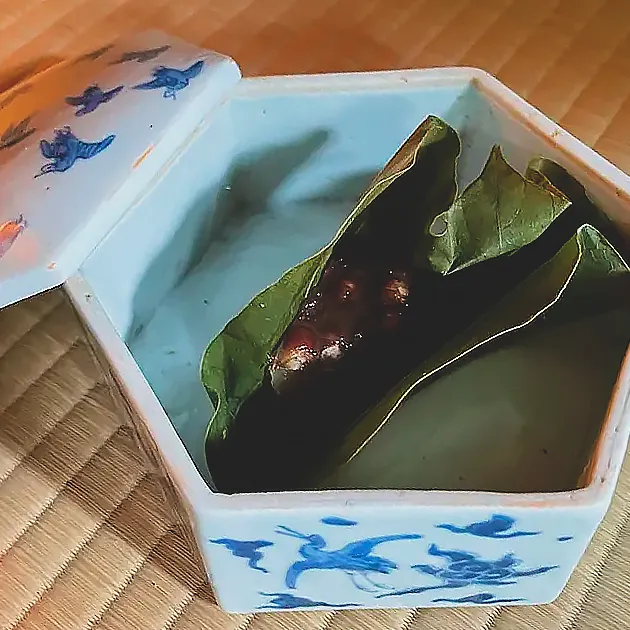
There are sweets in a variety of colors, shapes, ingredients, and themes all over Japan.
It is a tasty pleasure to choose the sweet according to the season and plan.
Tea Flowers
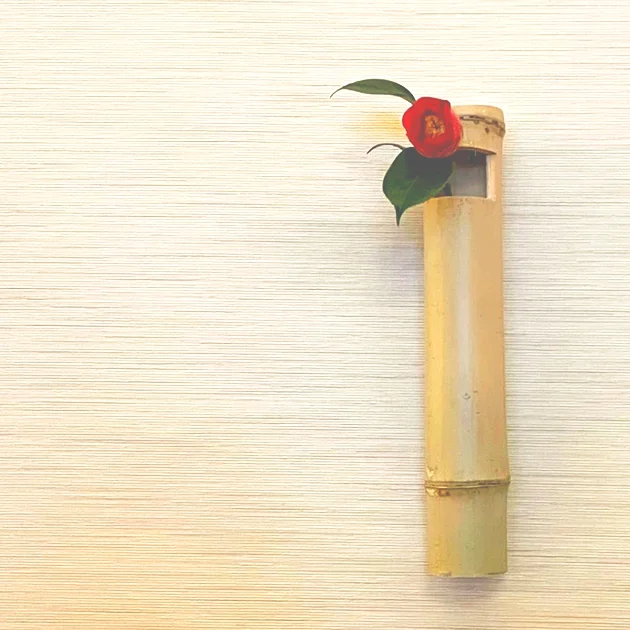
The only thing living in the tea room is flowers.
Sen no Rikyu, a Wabi cha’s master, taught “Flowers should be as in the field”.
Watching the flowers change every minute is unique to the Tea Ceremony.
KAISEKI Cusine
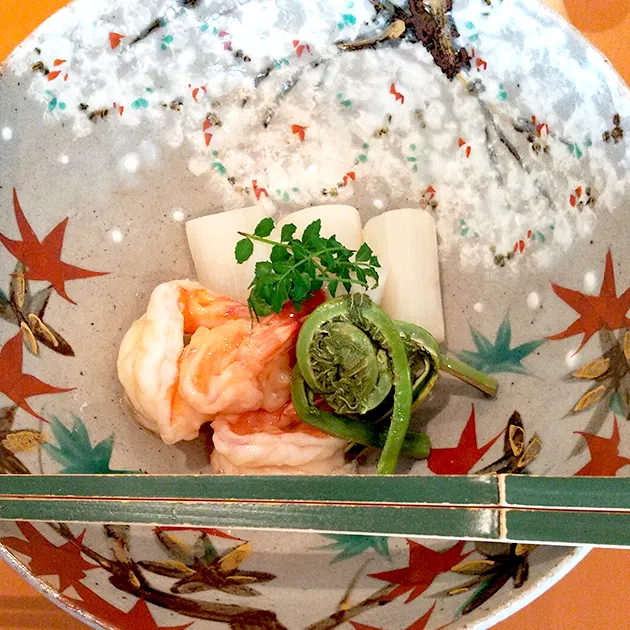
It’s a course meal of 1 soup and 3 plates, and freshly cooked rice with seasonal ingredients, along with drinks.
This meal will make you enjoy one cup of tea at its most exquisite.
Various Tea Utensils
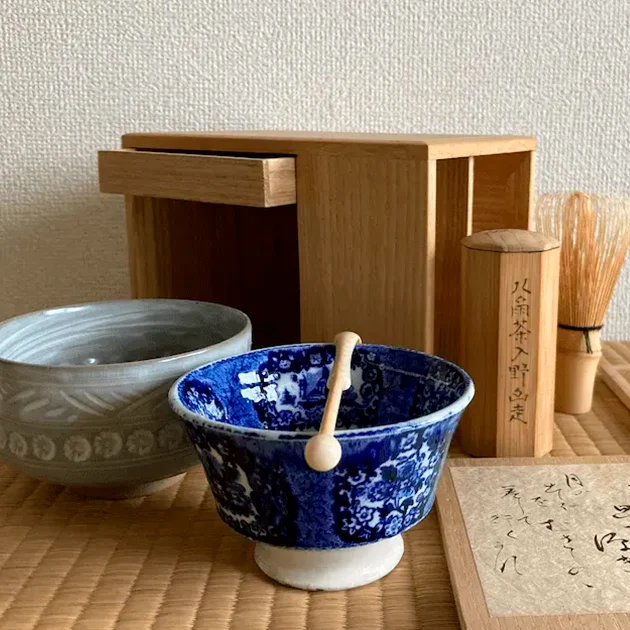
CHAIRE tea container, CHASHAKU teaspoon, MIZUSASHI a container for fresh water, and other utensils we don’t use in our daily life.
Collecting antiques, sharp bamboo to make your own teaspoon, creating a tea bowl of your own design, reading archives, deepening your interests is also joyful.

